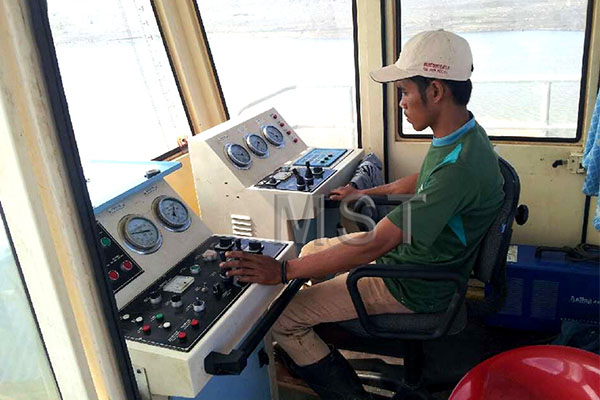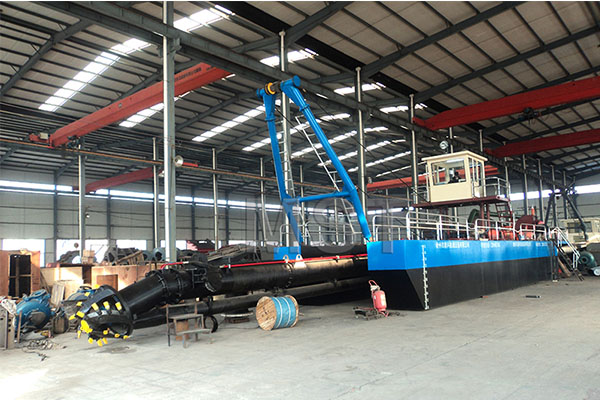 English
English Español
Español  Português
Português  русский
русский  Français
Français  日本語
日本語  Deutsch
Deutsch  tiếng Việt
tiếng Việt  Italiano
Italiano  Nederlands
Nederlands  ภาษาไทย
ภาษาไทย  Polski
Polski  한국어
한국어  Svenska
Svenska  magyar
magyar  Malay
Malay  বাংলা ভাষার
বাংলা ভাষার  Dansk
Dansk  Suomi
Suomi  हिन्दी
हिन्दी  Pilipino
Pilipino  Türkçe
Türkçe  Gaeilge
Gaeilge  العربية
العربية  Indonesia
Indonesia  Norsk
Norsk  تمل
تمل  český
český  ελληνικά
ελληνικά  український
український  Javanese
Javanese  فارسی
فارسی  தமிழ்
தமிழ்  తెలుగు
తెలుగు  नेपाली
नेपाली  Burmese
Burmese  български
български  ລາວ
ລາວ  Latine
Latine  Қазақша
Қазақша  Euskal
Euskal  Azərbaycan
Azərbaycan  Slovenský jazyk
Slovenský jazyk  Македонски
Македонски  Lietuvos
Lietuvos  Eesti Keel
Eesti Keel  Română
Română  Slovenski
Slovenski  मराठी
मराठी  Srpski језик
Srpski језик
The Cause of the Residue of Dredger
2021-05-14
In the construction of cutter suction dredger, if the excavation volume is greater than the suction volume, the mud layer is easy to collapse and produce residual layer. If there is a large back siltation in the construction area, it is easy to produce the phenomenon of pre excavation and post siltation. What are the causes of the residual layer.

(1) The main reason is that the excavation volume is larger than the suction volume, and the flow field caused by the rotation of the cutter.
(2) It is left after the mud surface is broken and scattered, and it is caused by water flushing or soil landslide. Therefore, a certain depth of excavation should be increased, which should also be determined according to the length of the construction period and the amount of siltation in the period.

The above is the reason for the residual layer. In operation, if the residual layer is encountered, the following treatment methods can be adopted:
(1) In general, because the amount of back silting is proportional to the length of construction period, the control measures of "first deep then shallow" should be taken into consideration when increasing the depth of excavation and preparation for silting. When the back siltation is small, it should be over deep to ensure the quality.
(2) When the thickness of sand is several times the diameter of cutter and the soil is loose sand, the slope collapse can be used to increase the concentration. However, the operation should be careful to avoid the collapse of the soil layer pressing on the bridge.
(3) In order to ensure personal safety, drinking is forbidden before work. All operations are forbidden after drinking, and those who are seasick are forbidden to operate.
(4) People under 18 and over 50 years old are not allowed to operate the dredger.
(5) Try not to work at night. Under special circumstances, the dredger detection equipment should be fully used and the personnel should be arranged in place.




